Best Roof Coating for Long-lasting Waterproofing
- 01/09/2025
- yuruwaterproof.com
When it comes to protecting your building, one of the most crucial elements is a high-quality roof coating. The right roof coating not only enhances waterproofing but also extends the life of your roof by shielding it from weather damage and wear over time. With numerous options available in the market, it’s important to understand the best roof coating solutions for long-lasting waterproofing. In this article, we’ll explore the different types of roof coatings, how to choose the best one for your specific needs, and the proper maintenance required to keep your roof in optimal condition. Let’s dive into the essential factors you should consider before making your decision.
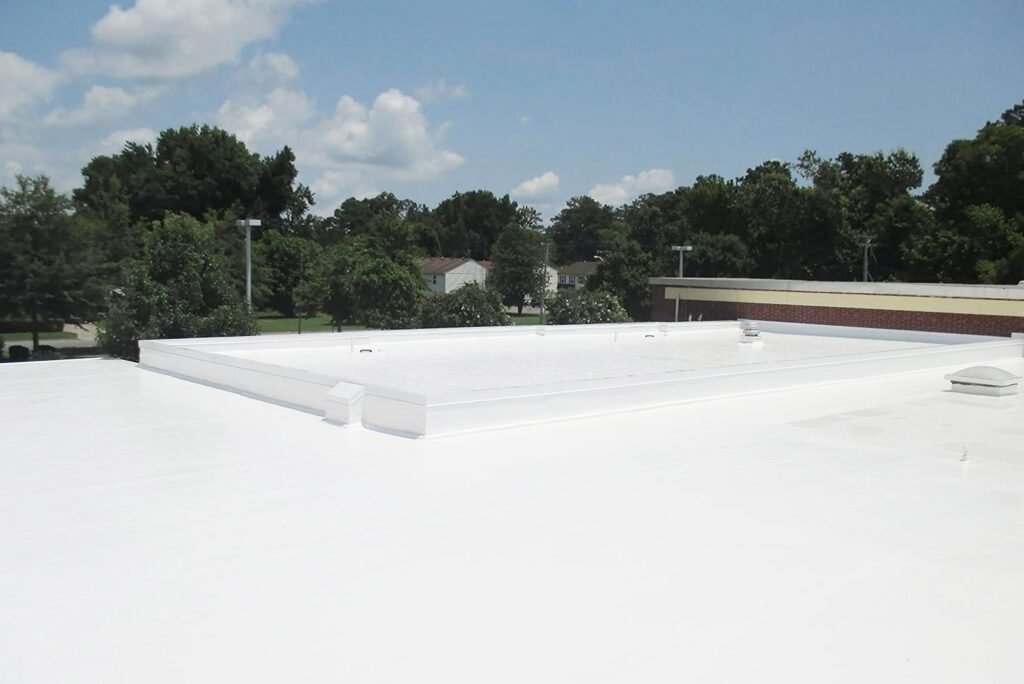
Why Choose High-Performance Roof Coatings?
In construction projects, roof waterproofing is a critical element. High-performance roof coatings provide excellent protection against water leakage, which is essential for prolonging the lifespan of the building. Opting for a top-quality roof coating not only helps prevent water damage but also reduces long-term maintenance costs. It strengthens the overall waterproofing performance of the structure, ensuring the roof remains intact despite various weather conditions.
Key Benefits of High-Performance Roof Coatings:
| Benefit | Description |
| Waterproof Protection | Effectively prevents water penetration, safeguarding the roof. |
| Longevity | Increases the lifespan of the roof by preventing wear and tear. |
| Cost-Effective | Reduces repair and maintenance expenses in the long run. |
| Weather Resistance | Protects against environmental factors such as UV rays, rain, and snow. |
| Improved Energy Efficiency | Reflective coatings can help reduce cooling costs by reflecting sunlight. |
Choosing a high-performance roof coating ensures that your building remains protected for years, minimizing costly repairs and maintaining the integrity of your roof structure.
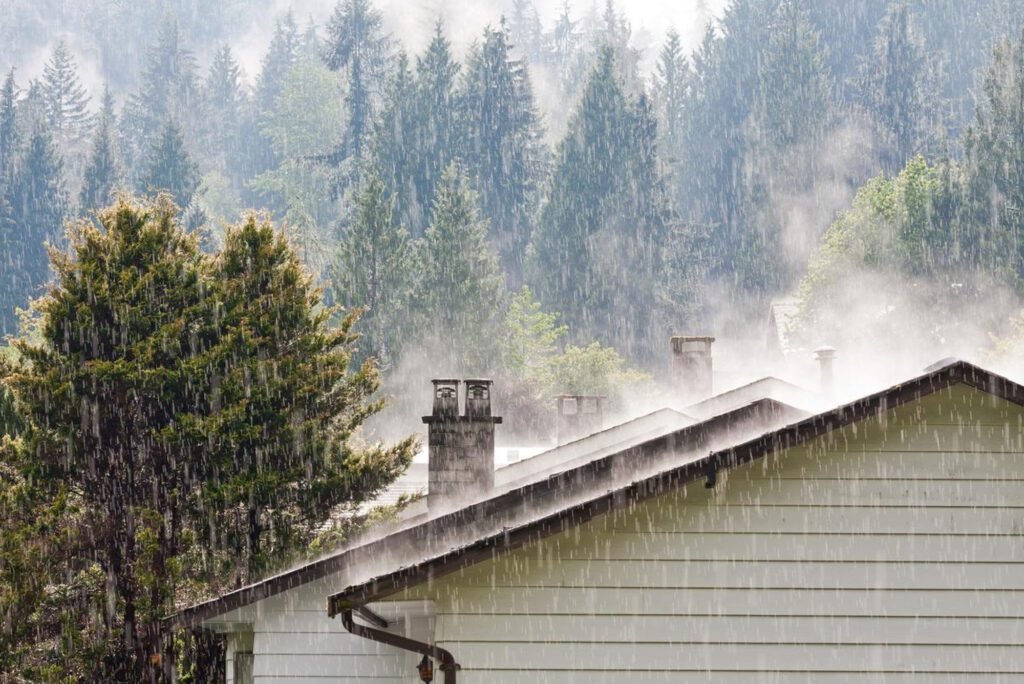
Types of Roof Coatings and Their Advantages
There are several types of roof coatings available on the market, each offering unique benefits suited to different roofing needs. The most commonly used roof coatings include acrylic coatings, polyurethane coatings, and silicone coatings. Understanding the strengths and features of each type will help you choose the most suitable coating for your roof’s specific requirements.
1. Acrylic Roof Coatings
Acrylic coatings are known for their excellent weather resistance and ability to withstand UV exposure. They are ideal for areas with high sun exposure, offering long-lasting protection without cracking or peeling.
- Advantages:
- Excellent weather resistance
- High UV stability
- Water-based, environmentally friendly
- Ideal for sloped roofs

2. Polyurethane Roof Coatings
Polyurethane coatings offer exceptional strength and durability, making them ideal for areas that experience heavy foot traffic or are subject to harsh weather conditions. These coatings provide a tough, flexible membrane that can handle significant physical stress.
- Advantages:
- High tensile strength
- Superior impact resistance
- Excellent adhesion to a variety of substrates
- Suitable for both flat and sloped roofs

3. Silicone Roof Coatings
Silicone coatings are highly effective in extreme weather conditions, particularly in areas with heavy rainfall or freezing temperatures. They have excellent resistance to water and environmental elements, and their anti-aging properties make them a long-term solution for roof protection.
- Advantages:
- Superior waterproofing capabilities
- Excellent resistance to aging and degradation
- UV stable and resistant to ponding water
- Long-lasting and low-maintenance

Comparison of Roof Coating Types:
| Coating Type | Advantages | Ideal For |
| Acrylic | Excellent weather resistance, UV stability, water-based | Sloped roofs, areas with high sun exposure |
| Polyurethane | High tensile strength, impact resistance, superior adhesion | Areas with heavy foot traffic, flat roofs |
| Silicone | Superior waterproofing, excellent aging resistance, UV stability | Wet climates, roofs prone to ponding water |
Each type of roof coating has its own set of advantages, and selecting the right one depends on the specific needs of your building’s roof. Whether you’re looking for weather resistance, impact strength, or long-term waterproofing, there’s a coating that fits your requirements.
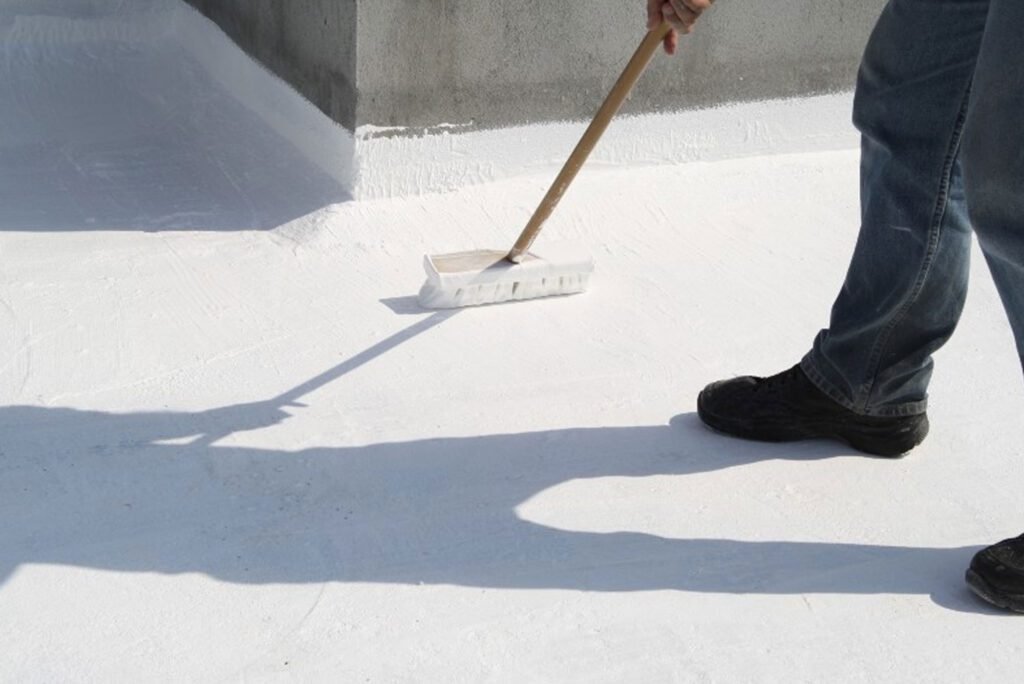
How to Choose the Right Waterproof Roof Coating for Your Roof?
Choosing the right roof coating requires careful consideration of several factors, including the type of roofing material, climate conditions, and budget. Different types of roofs (flat vs. sloped) may also require different coatings. Furthermore, it’s important to assess the durability, water resistance, and UV protection of the coating to ensure long-lasting performance.
Key Factors to Consider When Choosing a Roof Coating:
1. Roof Material
The material of your roof plays a significant role in determining the type of coating you should use. For example, metal roofs require coatings that adhere well to metal surfaces, while asphalt and concrete roofs may require different formulations for optimal performance.
Metal Roofs: Look for coatings that provide excellent adhesion and protect against rust and corrosion.
Asphalt Roofs: Choose coatings that offer UV protection and reduce cracking.
Concrete Roofs: Opt for coatings that offer strong waterproofing and thermal insulation properties.
2. Climate Conditions
The local climate is a critical factor in determining the right roof coating. For areas with extreme temperatures, heavy rainfall, or significant UV exposure, select coatings with high resistance to environmental stress.
Hot Climates: Consider reflective coatings to reduce heat absorption and cooling costs.
Cold Climates: Choose coatings with excellent resistance to freezing and thawing cycles.
Wet Climates: Silicone or polyurethane coatings offer superior waterproofing properties.
3. Roof Slope
The slope of your roof influences how water drains and how susceptible the surface is to pooling. Flat roofs typically require more robust waterproof coatings to prevent water accumulation, while sloped roofs benefit from coatings that provide UV protection and flexibility.
Flat Roofs: Polyurethane or silicone coatings are ideal for preventing water ponding.
Sloped Roofs: Acrylic coatings are suitable for sloped roofs as they offer excellent weather resistance.
4. Durability and Maintenance
Consider the expected lifespan and ease of maintenance of the coating. A durable coating reduces the need for frequent repairs and maintenance, saving you money in the long run.
Long-lasting Options: Polyurethane and silicone coatings are highly durable and require minimal maintenance.
Maintenance Needs: Acrylic coatings are easier to maintain but may need periodic reapplication in harsh environments.
5. Budget
Your budget will also affect the type of coating you choose. While higher-end coatings like polyurethane and silicone may cost more initially, they provide long-term benefits through superior durability and reduced maintenance costs.
Factors Summary:
| Factor | Recommendation |
| Roof Material | Choose coatings designed for the specific material (metal, asphalt, concrete) |
| Climate Conditions | Reflective coatings for hot climates, freeze-resistant coatings for cold areas |
| Roof Slope | Use polyurethane or silicone for flat roofs; acrylic for sloped roofs |
| Durability | Opt for polyurethane or silicone for long-term durability |
| Budget | Acrylic coatings are cost-effective, while silicone and polyurethane provide long-term value |
By considering these factors, you can select the best roof coating that suits your roof’s needs, ensuring long-term waterproofing protection and reducing maintenance costs.
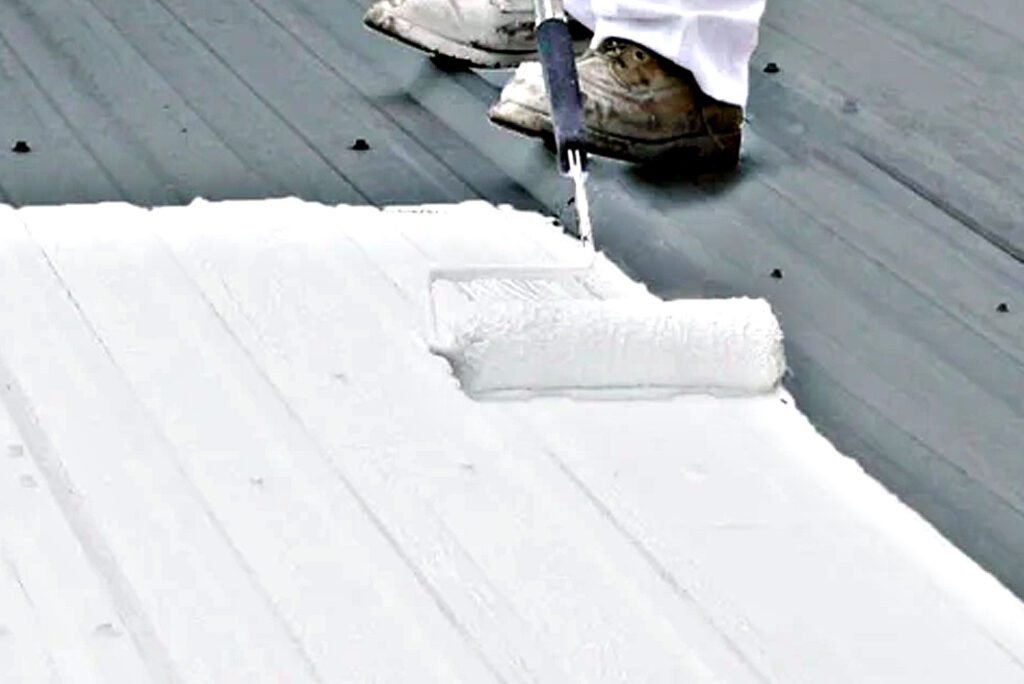
Roof Coating Application Process and Important Considerations
The roof coating application process involves several key steps, including roof cleaning, crack repair, applying the waterproof coating, laying down polyester fabric, and finally allowing the coating to cure. It is crucial to ensure that weather conditions are appropriate for the application to prevent complications. Additionally, safety precautions must be observed throughout the process.
Steps in the Roof Coating Application:
1. Roof Cleaning
The first step is to thoroughly clean the roof surface to remove debris, dirt, moss, or algae. A clean surface ensures proper adhesion of the roof coating.
- Use a pressure washer or a soft brush to clean the surface.
- Remove any debris such as leaves, twigs, and dirt to avoid contamination.
- Ensure the roof is dry before proceeding with the next steps.
2. Crack and Surface Repair
Any cracks or damage in the roof must be repaired before applying the coating. Repairing the surface prevents future leaks and ensures the coating bonds effectively.
- Fill in any cracks with appropriate sealants or fillers.
- Smooth out rough or damaged areas to create an even surface for coating application.
- Inspect for signs of wear, and address any issues to prevent long-term damage.
3. Applying the Waterproof Coating
Once the roof is clean and repaired, it’s time to apply the waterproof coating. This is done using a brush, roller, or sprayer, depending on the coating type and roof size.
- Apply the first layer of coating evenly across the roof surface.
- Ensure that the coating reaches all areas, especially seams and joints where leaks are most likely.
- Allow the first layer to dry completely before applying additional layers if necessary.
4. Laying Polyester Fabric (if required)
For roofs requiring extra reinforcement, polyester fabric can be embedded into the coating. This provides added strength and flexibility, particularly for flat or low-slope roofs.
- Lay down the polyester fabric while the first layer of coating is still wet.
- Press the fabric firmly into the coating to ensure it bonds properly.
5. Curing Process
After the final layer of coating is applied, the coating needs to cure properly to form a durable, waterproof membrane.
- Allow the coating to cure for the recommended period (usually 24 to 48 hours).
- Ensure the roof is not exposed to rain or heavy moisture during the curing process to avoid compromising the coating’s integrity.
Important Considerations During Application:
| Consideration | Recommendation |
| Weather Conditions | Apply the coating on dry, clear days with no rain or humidity. |
| Safety Measures | Ensure all workers wear safety gear, including gloves, goggles, and non-slip footwear. |
| Surface Temperature | Apply coating when the roof surface temperature is optimal (typically between 50°F – 85°F or 10°C – 29°C). |
| Drying Time | Allow each layer to dry completely before applying subsequent coats to ensure proper adhesion. |
By following these steps and paying close attention to weather conditions and safety guidelines, you can achieve a professional roof coating application that ensures lasting waterproof protection.
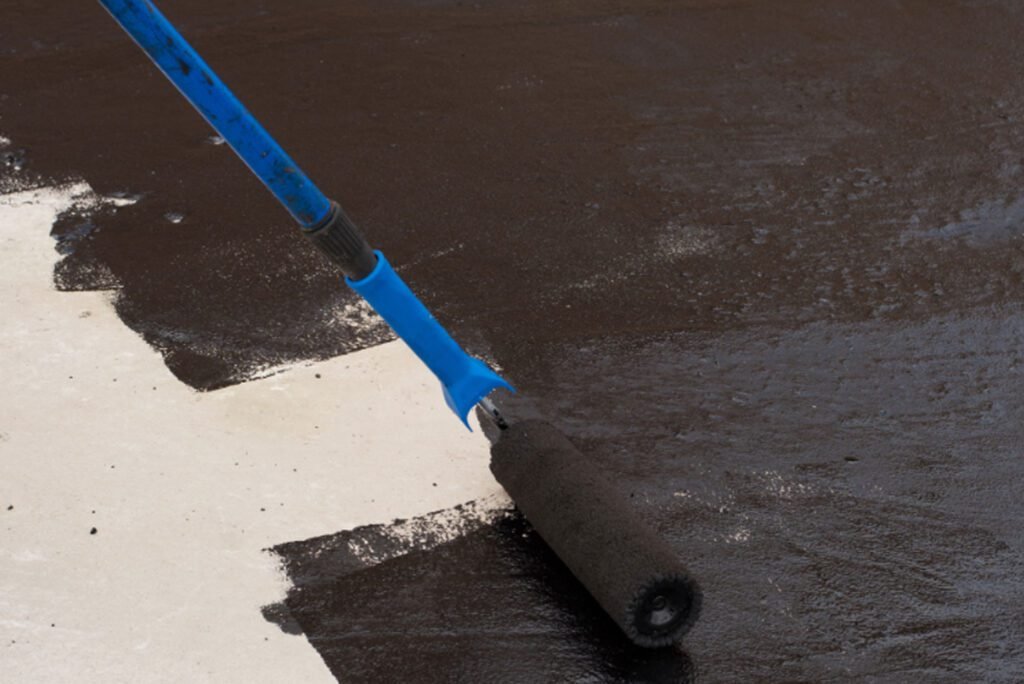
Roof Coating Maintenance and Care
While high-quality roof coatings provide long-term waterproof protection, regular inspection and maintenance are essential to ensure their continued effectiveness. Routine roof cleaning, checking for cracks or damage, and prompt repairs can significantly extend the lifespan of the coating and maintain optimal waterproofing performance.
Essential Maintenance Tasks for Roof Coatings:
1. Regular Roof Inspections
Conduct regular inspections of the roof to identify potential issues before they escalate. Check for signs of wear, cracks, or any damage to the coating that could compromise its effectiveness.
- Inspect the roof at least twice a year, particularly after severe weather events.
- Look for visible signs of deterioration, such as peeling, cracking, or blistering.
- Ensure all seams and joints are sealed properly to prevent water ingress.
2. Roof Cleaning
Keeping the roof clean is crucial for maintaining the integrity of the coating. Dirt, debris, and organic matter like moss or algae can trap moisture and damage the coating over time.
- Clean the roof regularly using a soft-bristled broom, pressure washer, or hose.
- Remove leaves, twigs, and other debris to prevent build-up.
- In humid climates, keep an eye out for moss or algae growth, which can weaken the coating.
3. Crack Repair and Touch-ups
If any cracks, chips, or damage are detected, they should be repaired immediately to prevent water from seeping beneath the coating. Touch-ups help maintain the waterproofing integrity of the roof.
- Fill small cracks with an appropriate sealant designed for roof coatings.
- For larger cracks or damage, consider reapplying a layer of coating or using a patching material.
- Inspect around seams, flashing, and roof penetrations, as these areas are more prone to damage.
4. Preventing Ponding Water
Standing water on the roof can damage the coating and promote the growth of moss and algae. Ensure proper drainage and take measures to prevent water from accumulating on the surface.
- Check and clear gutters, downspouts, and drains regularly to ensure water flows off the roof properly.
- Install additional drainage solutions if necessary to prevent water pooling.
5. Reapplication of Roof Coating
Over time, the roof coating may lose its effectiveness due to UV exposure, weathering, and normal wear. Reapplying the coating at regular intervals ensures continuous waterproof protection.
- Depending on the type of coating and environmental factors, reapply the coating every 5-10 years.
- Choose high-quality coatings that offer better resistance to weathering for longer-lasting protection.
Maintenance Checklist:
| Maintenance Task | Frequency | Action |
| Roof Inspection | Twice a year, after severe weather | Inspect for damage, cracks, and wear. |
| Roof Cleaning | Every 3-6 months | Clean roof surfaces to remove debris. |
| Crack Repair | As needed, after inspections | Seal cracks or reapply coating if necessary. |
| Ponding Water Prevention | After rain or storms | Clear gutters and ensure proper drainage. |
| Reapplication of Coating | Every 5-10 years | Apply a fresh layer to maintain waterproofing. |
By performing regular maintenance and addressing issues promptly, you can significantly extend the life of your roof coating and ensure it continues to protect your roof from water damage and environmental wear.
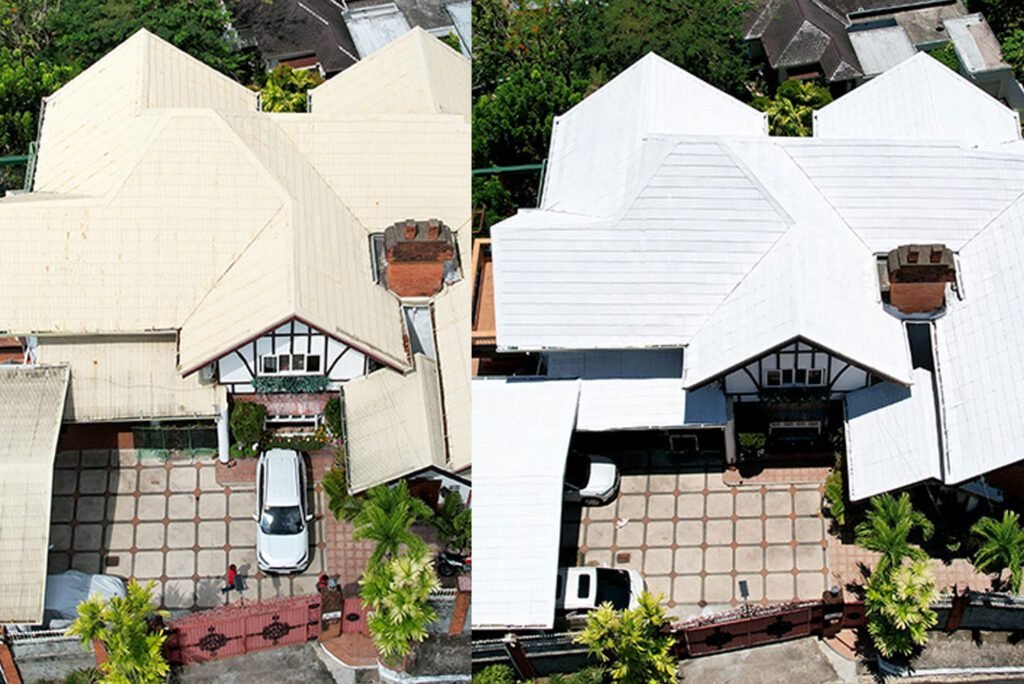
Advantages of YURU Waterproof Coatings and Customer Feedback
YURU waterproof coatings have gained the trust of numerous construction project managers and wholesalers due to their outstanding performance and long-lasting durability. Customer feedback highlights the excellent ability of YURU’s roof coatings to withstand various climate conditions, keeping roofs dry and protected for extended periods. With exceptional water resistance and durability, YURU has established itself as a reliable choice for roof waterproofing. Furthermore, YURU offers custom solutions to meet the unique needs of different clients, providing tailored options for every project.
Key Advantages of YURU Waterproof Coatings:
1. Superior Water Resistance
YURU coatings are designed to provide long-term waterproofing protection, effectively preventing water penetration and ensuring that your roof remains dry even during heavy rain.
- Excellent resistance to water seepage and ponding.
- Effective in both wet and dry climates.
- Ideal for roofs exposed to harsh weather conditions.
2. Durability and Longevity
One of the standout features of YURU coatings is their ability to endure extreme weather changes without degrading. This results in long-lasting protection and fewer maintenance needs.
- UV resistant, preventing cracking and peeling.
- Resilient to temperature fluctuations and weathering.
- Keeps the roof in optimal condition for many years.
3. Adaptability to Different Roof Types
YURU’s coatings are suitable for a variety of roof materials, including metal, asphalt, and concrete, offering a tailored solution for each surface type.
- Specially formulated to adhere to metal, asphalt, concrete, and more.
- Works well on both flat and sloped roofs.
- Custom options available based on specific material requirements.
4. Custom Solutions for Every Need
YURU understands that every project is unique. That’s why they offer customizable coating options, allowing clients to select the most suitable solution for their roofing needs.
- Custom formulations tailored to meet specific requirements.
- Support for large-scale commercial projects as well as smaller residential needs.
- Expert consultation to choose the right coating type for the job.
Customer Feedback Highlights:
| Customer Type | Feedback |
| Construction Project Managers | YURU coatings are reliable, effective against the harshest weather, and help reduce repair costs. |
| Wholesalers | The durability and performance of YURU products have earned them repeat business and positive reviews. |
| Residential Clients | Customers report long-lasting protection and improved roof stability even after years of exposure to the elements. |
By choosing YURU waterproof coatings, customers benefit from a high-performance product that delivers on its promises, offering peace of mind and reducing long-term roofing costs.
Conclusion: The Future of Waterproofing
In conclusion, selecting the right roof coating is essential for ensuring long-term waterproofing and protection of your building. With various types of coatings available—such as acrylic, polyurethane, and silicone—each offers unique advantages tailored to different roof types and environmental conditions. Understanding the specific needs of your roof, such as its material, climate exposure, and slope, will help you make the best choice.
When it comes to durability, reliability, and long-term performance, YURU Waterproof Coatings stand out as an excellent choice. Trusted by construction project managers and wholesalers alike, YURU coatings provide superior waterproofing protection and are designed to withstand the harshest weather conditions. With additional benefits like custom solutions and exceptional water resistance, YURU ensures your roof remains dry, secure, and well-maintained for years to come.
For those looking for high-quality, durable roof coatings, YURU offers a product that meets all your needs. Ensure that your roof is equipped with the best protection by choosing YURU Waterproof Coatings—your trusted partner in roof care and waterproofing.


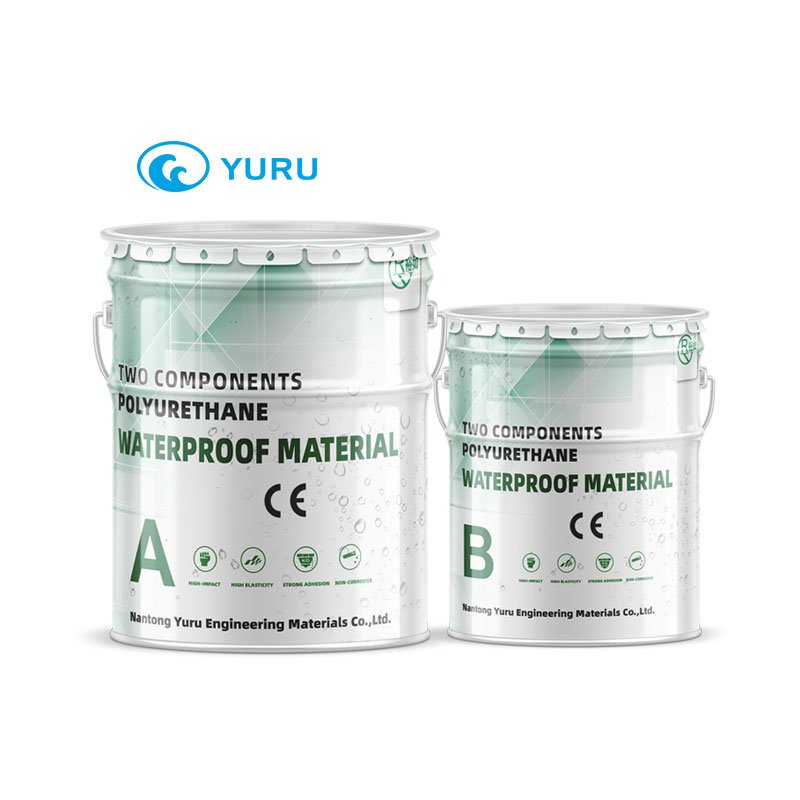



Waterproof Coating
- One-component oil-based polyurethane waterproof coating
- One-component water-based polyurethane waterproof coating
- Two-component polyurethane waterproof coating
- Two-component 6.0Mpa polyurethane waterproof coating
- Transparent Waterproof Glue
- Nano Invisible Waterproof Agent
- Silicone Waterproof Coating
- Acrylic Waterproof Coating For Metal Roof
- JS Polymer Waterproof Coating
- High Elastic Liquid Rubber Waterproof Coating
- Cement-based Penetrating Crystallization Waterproof Coating
